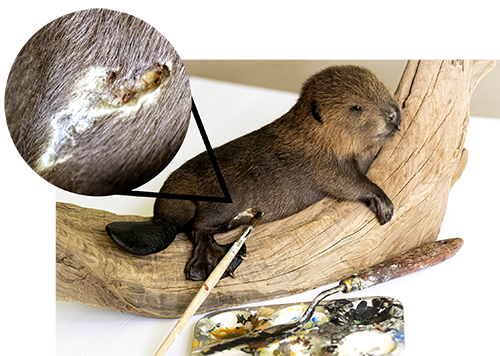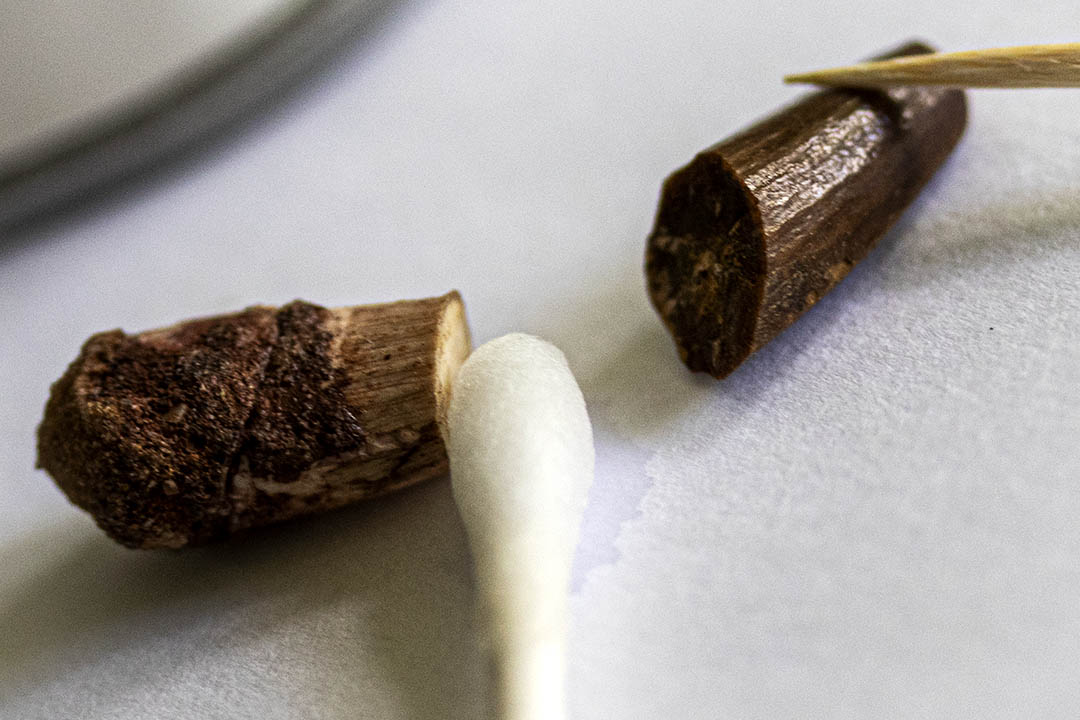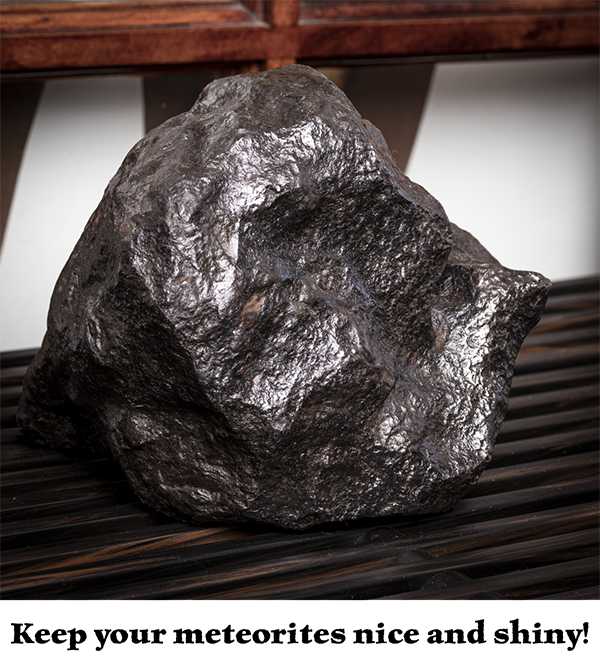The experts in The Evolution Store’s fabrication department are able to help with the care and maintenance of all the items we sell. Please email us at fabrication@theevolutionstore.com or call us at 212-343-1114 x 401 for a quote. In order to streamline production, inquiries are processed on Mondays and Tuesdays between the hours of 10am and 5pm EST.
There are also many things you can do on your own to ensure that your collection is preserved for years to come. Read on for more information.
Entomology
With the proper care, insects can be preserved for decades. In order to prevent colors from fading, do not place them in direct sunlight.
Also avoid areas with high humidity, as this can create an opportunity for mold.
All insects naturally release a harmless gas after they’re preserved. In most cases, this isn’t visible, but sometimes you may notice a sort of halo on the glass behind the specimen. Unlike other brands, The Evolution Store’s frames are uniquely designed to facilitate repairs and gentle cleaning, so that your bugs always look as good as new.

The screws on the bottom can be removed and the glass can be slid out, which also means that if your frame has been dropped, we can reattach any insect parts that may have fallen off! Some customers also request that their specimen be switched out for a new one to refresh their décor. This is a huge long term advantage when it comes to maintaining an entomological collection.
Unframed preserved insects, ironically, can attract live insects. These pests are easily repelled by including a small piece of fumigant in the box or drawer where they’re stored. We use Vaportape II, which can be purchased online through various retailers. Use gloves when handling the strips and replace them quarterly.
Taxidermy
Taxidermy is the process of preserving animal skins, typically through tanning (in the case of conventional taxidermy) or freeze drying. These preparation methods aim to remove as much moisture and oils from the hide as possible in order to prevent decomposition, but there are always microscopic amounts left, especially at the roots of hair follicles or feathers. These trace amounts of organic matter can attract pests such as flies, who lay their eggs near these potential food sources. When the eggs hatch, they feed on the surrounding tissue, which can result in unsightly bald spots on your taxidermy.
In order to keep your taxidermy in tip top shape, we suggest following some basic preventative maintenance protocols. First of all, do not bring home skulls that have not been professionally cleaned; these can contain pests that will spread throughout your home and can infest your entire collection. If you aren’t certain of the source of a skull, it is best to place it in the freezer for one week (this will kill off any adult pests, but any eggs will simply go into hibernation), leave it at room temperature for a week in a sealed container (allowing any eggs to hatch), and then placing it in the freezer again (killing off the newly hatched eggs before they have a chance to reproduce). Following this freeze-thaw-freeze procedure should stop any potential infestation from new skulls brought into your home. This method is strictly adhered to here at The Evolution Store.

In order to prevent colors from fading, do not place taxidermy in direct sunlight. Also avoid areas with high humidity, as this can create an opportunity for mold.
It is also important to protect your taxidermy itself by applying a nontoxic pesticide directly to the hide twice a year. We use Mount Medix Mount Protector spray. Gently vacuum your taxidermy (if it has hair) and then spray a fine mist of the Mount Protector all over it (don’t forget the underside). Avoid the eyes and mouths, as these are often painted and any moisture might damage the paint. This method can be used on taxidermy mammals, birds, and reptiles.
If you notice bald spots on your taxidermy, or if you find insect egg casings around it, immediately isolate it from the rest of your collection and place it in an airtight container. It may be infested and it is important to act quickly in order to prevent further spread.
In this case, the best course of action would be to have the piece professionally fumigated by an extermination company. This procedure is perfectly safe for all types of taxidermy, and is routinely used by museums and individuals with large collections (The Evolution Store has its entire collection fumigated once a year).

Fossils
Has this ever happened to you? You acquire a beautiful fossil and are marveling at the fact that - somehow - it has endured intact over millions of years and then, within the cosmic blink of an eye, you drop it and it breaks! Never fear, PaleoBOND is here! This is the adhesive of choice for professional and amateur paleontologists all over the world (and the experts at The Evolution Store). Their special formula is designed to penetrate the unique porous structure of fossils, and different strengths are available depending on how large and heavy the repair is.
Meteorites
Meteorites are 4.5 billion years old, and most of the ones at The Evolution Store contain 90-95% iron. Of the three main types of meteorites - stone, stony iron, and iron - only 1 in 20 meteorites are iron!
When exposed to the earth’s oxygen-rich atmosphere, iron meteorites naturally begin to oxidize and rust. It is possible, however, to minimize the impact rust may have on them. To maintain an iron meteorite in excellent condition, it is important that you care for it following the guidelines below:
- Always keep your meteorite in a dry place (avoid bathrooms or outdoor areas).
- Apply a thin layer of mineral oil once or twice a year to prevent the chance of rust.
- Remove any rust that may appear with a nylon bristle brush.
If you follow these steps, you should be able to enjoy your meteorite for the next 4.5 billion years!


A word of caution - don’t scrub too hard when removing rust. You don’t want to remove the valuable fusion crust that many meteorites have. This is the dark outer layer that melted and then cooled when it entered our atmosphere. These are known as “whole” meteorites (as opposed to meteorite crystals, which are pieces of a larger specimen that has been heated and cooled artificially and then cracked into a million pieces - they tend to be a lot shinier, since they’re actually from the inside of a whole meteorite).